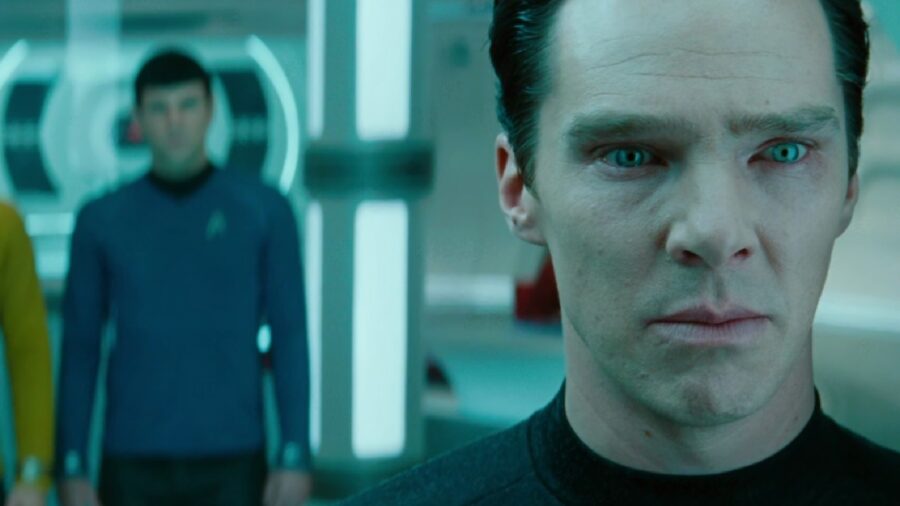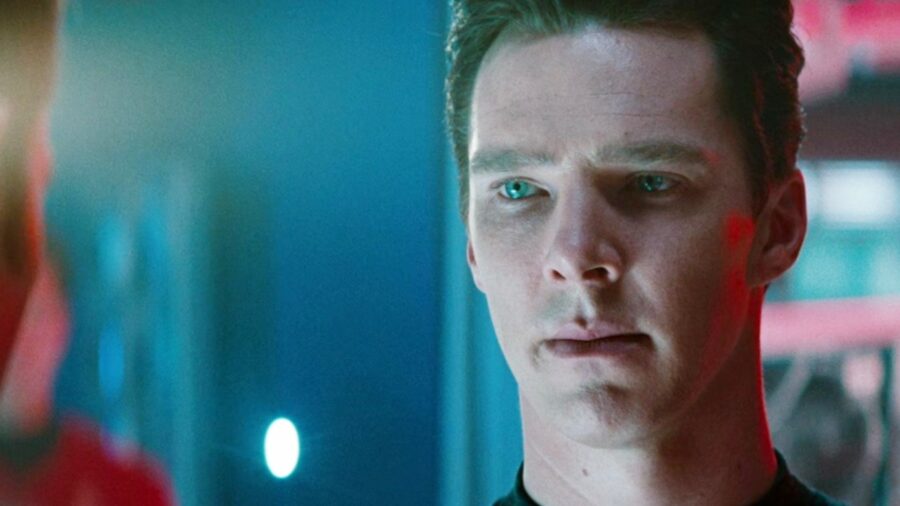Star Trek Into Darkness Almost Had A Totally Different Villain

There were no shortage of opinions shared when it came to J.J. Abrams’ Star Trek Into Darkness. In spite of positive critical reviews (84% fresh on Rotten Tomatoes) and box office success ($467 million worldwide), the sequel proved even more divisive than Abrams’ first Star Trek reboot film.
While many fans are all too happy to play armchair quarterback (armchair captain?), I still find it fascinating to understand why Star Trek Into Darkness’ creative team made its choices. An interview with co-writer Roberto Orci focused on one of the film’s most hotly debated elements: its villain.
The trouble, of course, stemmed from the fact that actor Benedict Cumberbatch did indeed prove to be playing a new version of Khan Noonien Singh, the character originally and masterfully played by Ricardo Montalban.
The villain’s true identity was rumored from early on in the sequel’s production, especially after both Benicio del Toro and Javier Bardem turned down the part.
The eventual casting of lily-white Brit Cumberbatch threw a wrench in those rumors, but those who stood by their speculation proved to be right: Into Darkness dealt with Khan’s shifting ethnicity by simply ignoring it. For a while there, the film’s writers were unsure if they were going to go the Khan route — a choice that would inevitably piss off many of the franchise’s die-hard fans.
According to 1701news.com, Orci says that “Khan was on our mind” in the early days of planning the sequel, and Wrath of Khan set a bar that Orci and fellow co-writers Alex Kurtzman and Damon Lindelof wanted to aspire to.
Orci says that actually using Khan was an idea that entered the discussion early on. “We started with Khan, went away from Khan, and then went back to him,” says Orci. The initial idea was to craft a Khan story in the vein of Joseph Conrad’s Heart of Darkness, where the Enterprise crew is sent after the villain, only to wind up forced to collaborate with him against a larger danger.

However, the writers soon found one of the perils of trying to redo an infamous and beloved bad guy. Orci recalls that they “felt like we were falling into the trap of using a villain based on previous knowledge of the villain, and we were somehow relying on the audience’s expectation to love or hate Khan to make that work.”
Instead, they dropped the Khan idea and focused on creating a new villain to accompany a new story. During this period, the core elements of the John Harrison/Khan story from Into Darkness took shape: the notion of the character being “one of our own,” the terrorist acts, and the secret corruption within Starfleet. Then they looked at the story and tried to figure out a way to insert Khan into it.
Orci says the desire to tell a new spin on the Khan story largely came from the simple fact that Khan is easily Star Trek’s most iconic villain. Gene Roddenberry’s fictional universe has had its officers face off against threats ranging from the Klingons to the Romulans, from the Borg to the Crystaline Entity.
But if you ask someone to name Trek’s best bad guy, there’s a damn good chance they’re going to say Khan. Some of that comes from Montalban’s amazing performance, but that performance was built atop the foundation of a damn-near-perfect script by Jack B. Sowards and director Nicholas Meyer (although Meyer’s script work is uncredited).
Needless to say, the writers knew their choice would automatically put them on many Trekkies’ shit lists. But the desire to pit their new, inexperienced Kirk against his most threatening nemesis won out in the end. “You can’t do Batman without The Joker,” says Orci.
“We knew it would be tricky, and we knew it would lead to a vocal outcry by some fans. But, you know, you have to make tough decisions, when you do something like this.”












